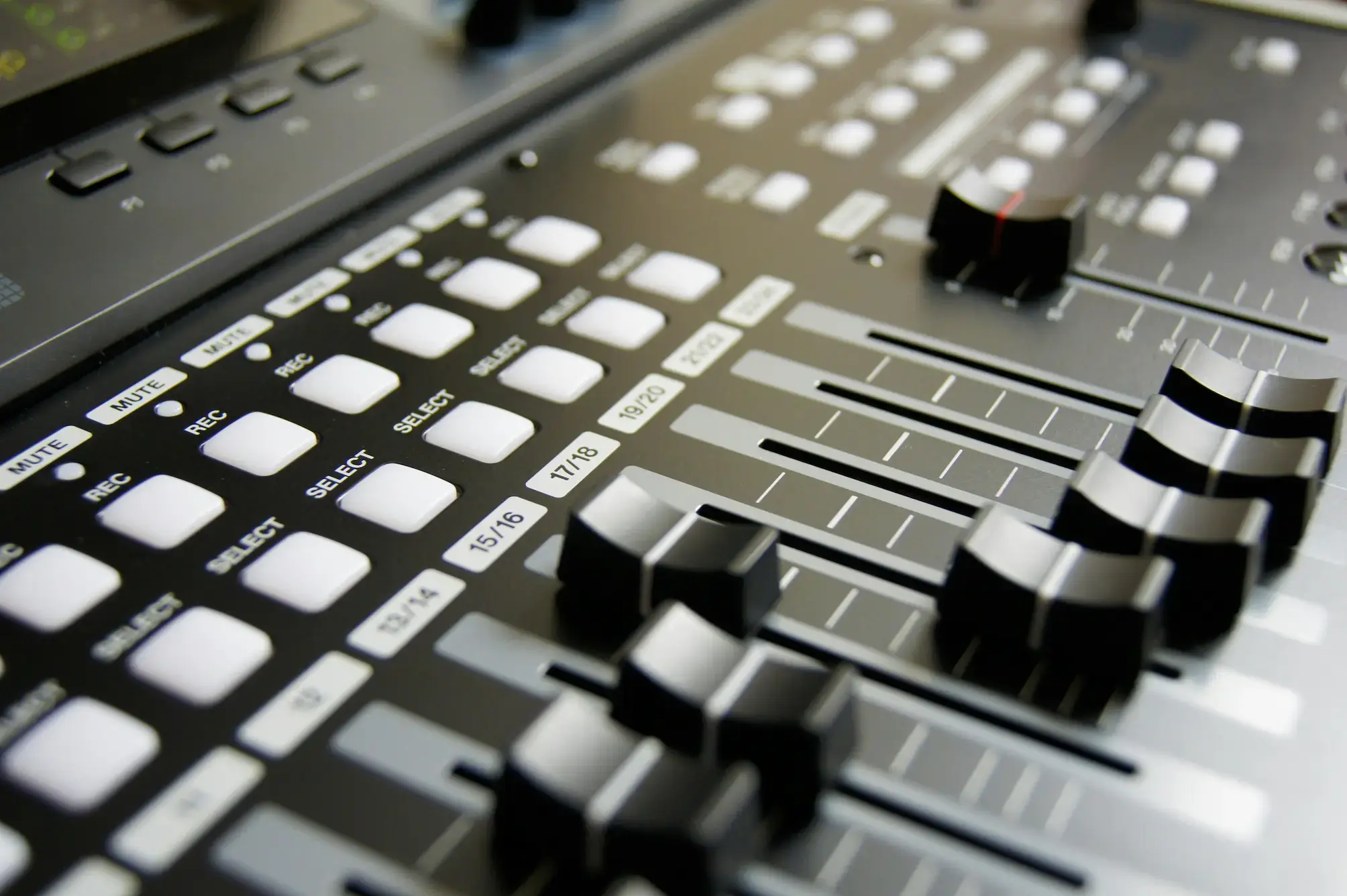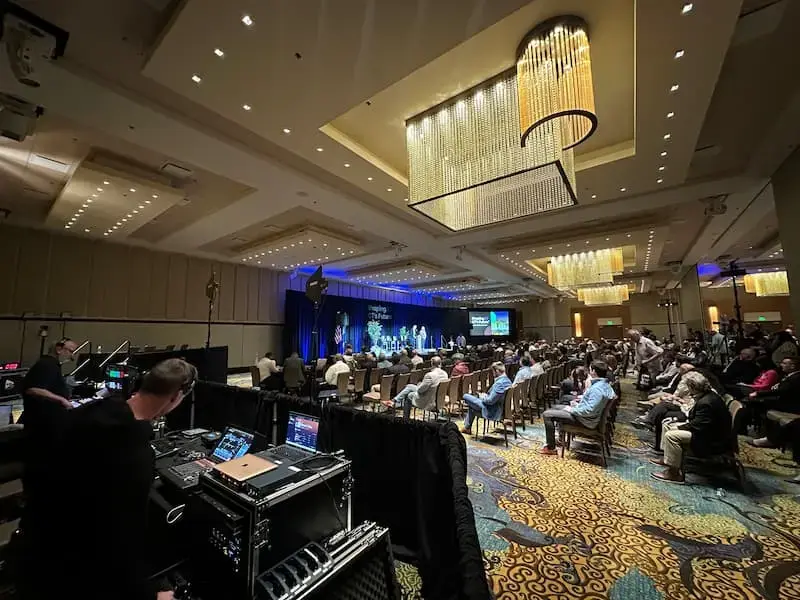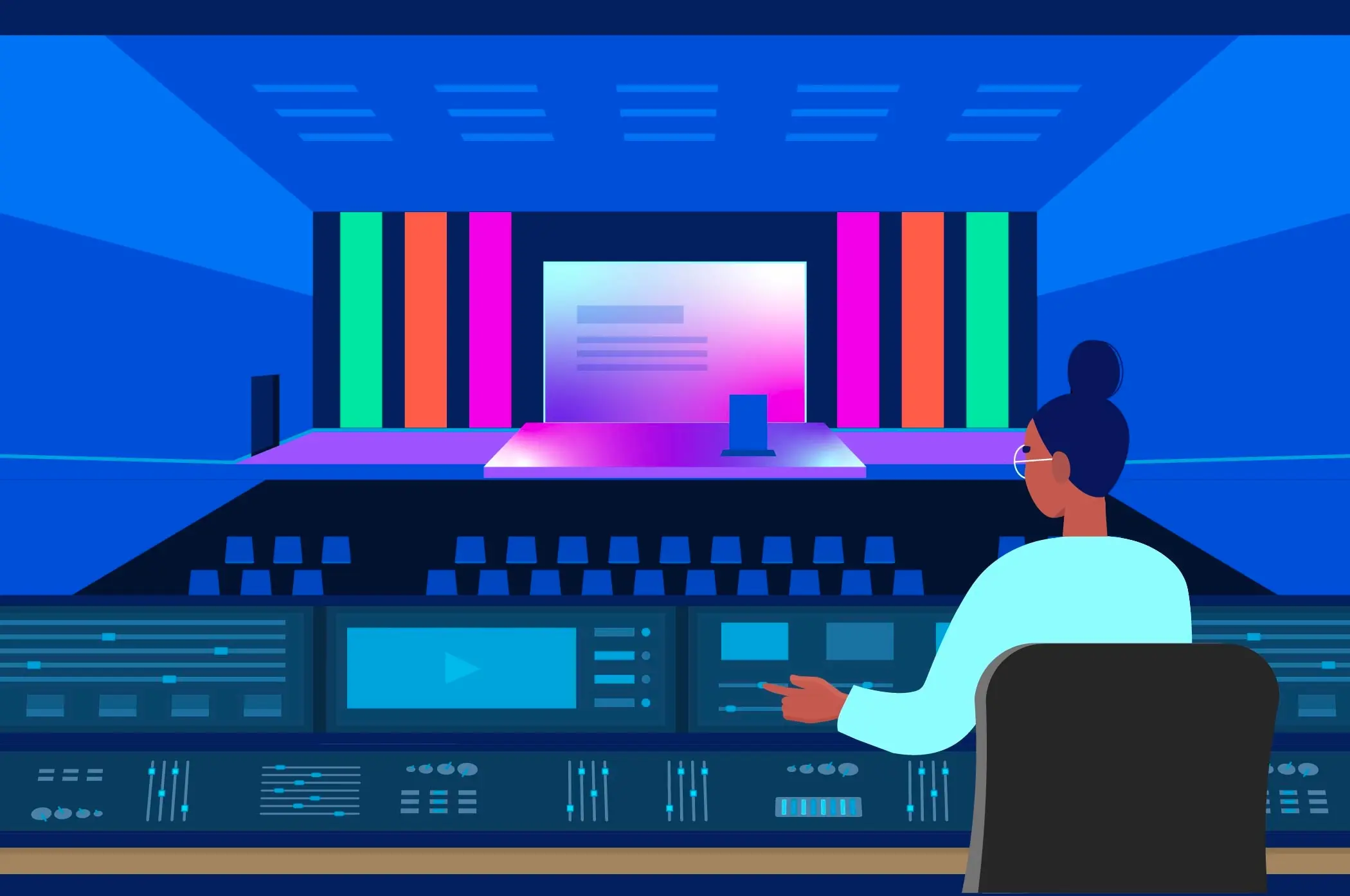Good visuals get attention, but great audio keeps it. Whether you're hosting a corporate meeting, product launch, or hybrid conference, clear, professional sound is essential. In this blog, we’ll break down why audio quality matters, common sound issues to avoid, and how working with the right AV team makes all the difference.
Sound is the collection of all noises within your venue. The ultimate goal is to make your event ‘SOUND’ great. Event professionals utilize great Audio Tools, for example, microphones, mixers and loudspeakers, to achieve that goal.
We’re going to discuss not only the audio system as the tool to deliver great sound, but also the impact of the type of content used to convey messages and emotions.
The Role of Audio in Event Success
Audio is largely taken for granted, but impacts all aspects of any live, hybrid, or virtual event. Audio delivers your message, reinforces audience attention, and defines your tone of emotion. When executed professionally, audio is the behind-the-scenes power behind every successful event.
Ultimately, we want to create an environment that connects the audience to your content with the least amount of distracting noise.
Importance of Audio Clarity
Clarity is on a spectrum, depending on the type of event. A keynote speaker, the CEO's business update, or the Valedictorian address requires high speech intelligibility. This means that the words and messages can be clearly understood by the audience.
Audio fidelity, on the other hand, is important for music and entertainment and refers to an accurate amplification of the sounds as intended.
Clarity in speech isn't just about hearing, it's about processing. Research confirms that people retain information better when they hear it without interference. Crisp, evenly distributed sound enhances both memory and learning outcomes.
Emotional and Psychological Effects of Sound(tracks)
Sound doesn’t just convey information, it shapes how people feel. Choosing music & ambient soundtracks that reflect the tone of the event prepares the audience for your message or content. High-energy music can energize a crowd, nature sounds can calm a nervous room, and the right musical selection builds anticipation before a big reveal. Sonic cues guide your audience’s emotional journey throughout an event. Use walk-on and walk-off music to reflect your brand and tell the story of the presenter. Transitional music keeps audiences engaged between segments. Even subtle background tracks can reduce perceived waiting time.
Multi-Channel Communication and Engagement
Audio fuels connection. Your audio must be correctly mixed for the audience. The in-room system needs a slightly different mix than the online viewers. For events with multilingual audiences, clear feeds are essential for interpreters and translation systems. When attendees hear clearly and without distraction, they engage more deeply, remember more, and feel more connected to the content.
Why Sound Quality Matters

The cases for high-quality sound at an event are universal: comprehension, emotion, and economics. Whether your event content is spoken word or musical, the audience needs to hear and comprehend as you intended. A paid, ticketed event is no different than a room full of company employees or graduating seniors, there is an emotional and financial investment made by the attendees, and you need to deliver.
Poor Audio Leaves a Negative, Lasting Impression
The audience is associating everything about the event with your brand and reputation. When the audio is poor, it is distracting and it reflects poorly on you. When a listener struggles to hear, it is physically and mentally exhausting and detracts from comprehension and retention. High-quality audio removes that distraction, and attendees are more likely to recall the message clearly.
Good Audio Boosts Event Professionalism
Polished audio is a sign of a well-run event. Balanced, full-spectrum sound instantly elevates your production quality, helping even modest gatherings feel high-end. Audio isn't just functional, it's part of the experience.
Poor sound coverage can isolate sections of your audience. Expert speaker placement and tuning ensure that attendees at the back or edges of a venue enjoy the same rich, intelligible experience as those up front. This sense of inclusion is vital for engagement and satisfaction.
Audio Challenges at Events
 Every venue, audience, and event format comes with unique audio hurdles. Recognizing and proactively addressing these ensures better results.
Every venue, audience, and event format comes with unique audio hurdles. Recognizing and proactively addressing these ensures better results.
What Your Audio System Cannot Do
Improve your presenter's speech: if your presenter speaks softly, rapidly or with a thick accent, no audio system or engineer will fix this in a live event setting. If you cannot choose an alternative speaker, consider speech coaching, which has proven effective for many executives.
Overcome attendee noise and conversation: Many social events become raucous settings where the audio system cannot overcome the background noise of the room. It’s up to the emcee and the content to grab and keep the audience's attention.
Eliminate reverberation or background noise in your venue: glass and marble make sound bounce in unpredictable ways. HVAC, silverware clinking, or machinery noise might be too much for the audio system to overcome and will distract the listeners.
Streaming and Hybrid Events
A hybrid event typically means that one or more of your presenters will do some from a remote location. A great example is using Zoom or Teams if they cannot travel. Getting good audio from a location that the AV team cannot control can be challenging. Some crucial advice:
- Noise-Cancelling Mics: Essential for presenters working from remote or uncontrolled environments. Do not let them use the microphone built into their phone or laptop!
- Platform Testing: Audio may sound different across Zoom, Teams, Webex, etc.
- Test & rehearse from the same location as the day of the event. Don’t test from a quiet office and join the event from a crowded Airport lounge!!
Streamed events deliver your content to a listen-only audience anywhere in the world. They are not impacted by the background noise of your in-person event and require special consideration.
- Separate Audio Mixes: What works in the room won’t always work online. Dedicated virtual audio feeds ensure optimal clarity for stream viewers.
- Latency & Sync: The most common issue is lip sync. High-quality equipment and platform combined with high-bandwidth internet help to minimize sync issues for the remote audience.
Environmental Challenges in Outdoor Events
- Wind Noise: Use foam windshields or furry windscreens on microphones. Directional mics and strategic mic placement help reduce gust effects.
- Weather Effects: Humidity, wind, and temperature affect how sound travels. Sound carries further and clearer on a dry, calm day compared to a humid, breezy day. An experienced audio crew can compensate for some of these factors, but not always overcome them.
- Background noises like traffic, neighboring crowds, and mechanical sounds from buildings can interfere with your sound. Factor these sounds into the audio design for the correct audio volume to the audience.
Trust your audio team to design a system according to the known challenges.
Tips for Professional Audio System Planning

Planning and Design
The most successful events start with a collaboration between the planner and the AV Production team. Review the venue, audience seating, media, speakers, and agenda, and design the correct system for your event.
The number of microphones, placement of speakers, and choice of components will vary according to those details. Even the crew and choice of engineer may be different depending on the style of event.
Soundcheck and Rehearsal
Include time for both soundcheck AND rehearsal. The sound check will happen with or without the presenters, but the rehearsal lets the crew dial things in. This is critical when you include musical performances or many emotional music cues.
Note that an empty venue will sound very different when filled with the audience. This is referred to as sound absorption, which reduces reflections and can improve sound quality.
Choosing the Right Audio Partner
- Relevant Experience: Do they understand your type of event—corporate, entertainment, or hybrid?
- References and Results: Ask for portfolios or case studies from previous clients.
- Troubleshooting Skills: What’s their protocol when something goes wrong?
- End-to-End Coverage: Ensure they handle both physical venue sound and remote participant audio.
- On-Site Support: Live monitoring and rapid-response technicians are vital for events with high stakes. Check out our blog for more information on meeting your A1 Audio Engineer and how they can help on the day.
Conclusion
Sound is the invisible thread that ties every element of your event together. When handled professionally, audio enhances communication, evokes emotion, and creates lasting impressions.
Don’t leave it as an afterthought. Invest in expert sound planning, trust your AV team, and deliver events that not only look good but sound spectacular.



